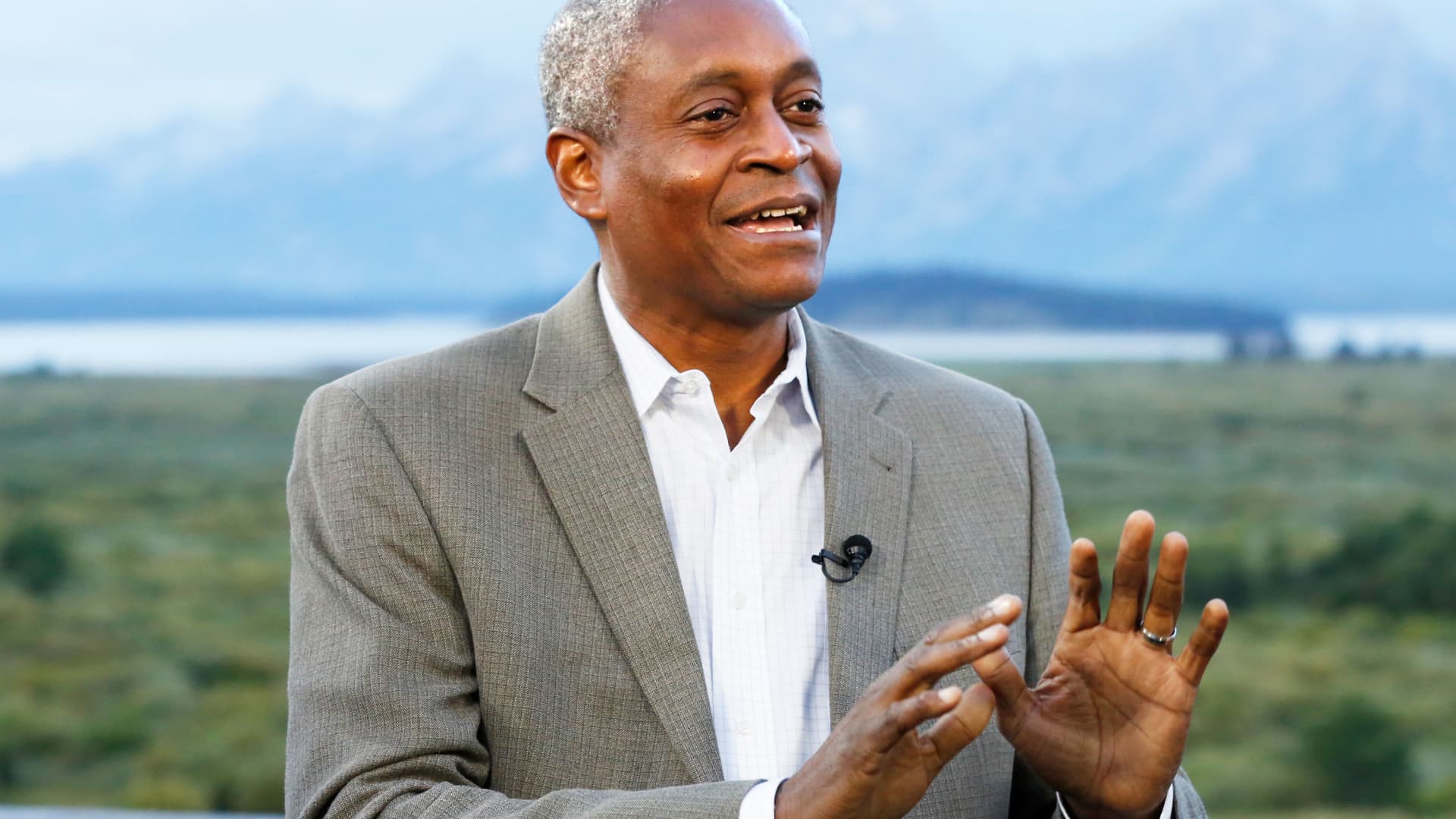Atlanta Federal Reserve President Raphael Bostic expressed concern Wednesday about the pace of inflation and indicated he doesn’t think interest rate cuts should come until much later in the year.
In a CNBC interview, the central bank official said strong productivity, a rebound in the supply chain and a resilient labor market are indicating that inflation is going to decline “much slower than what many have expected.”
“If the economy evolves as I expect, and that’s going to be seeing continued robustness in GDP, unemployment and a slow decline of inflation through the course of the year, I think it would be appropriate for us to do start moving down at the end of this year, the fourth quarter,” he said on “Squawk Box.” “We’ll just have to see where the data come in.”
Bostic’s comments come as other Fed officials also are indicating a desire to move cautiously on rate cuts. They have indicated that a strong economy as well as moderating inflation give them time to see more evidence that inflation is moving back to the central bank’s 2% target.
However, the balance of the Federal Open Market Committee, of which Bostic is a voting member, indicated last month that they see three cuts coming this year, assuming quarter percentage point increments.
That makes Bostic one of the more hawkish members of the rate-setting body. Markets anticipate the Fed will start cutting in June or July. The likelihood shifted Wednesday morning, with the market-implied probability of a June cut sliced to 54%, down about 10 percentage points from the previous day, according to the CME Group’s FedWatch gauge.
During Wednesday’s interview, Bostic indicated that his views on inflation and rates have swung back and forth as he’s watched the data evolve from positive progress on inflation in the latter part of 2023 to less certain footing this year.
“The road is going to be bumpy, and I think if you’ve looked over the last several months, inflation hasn’t moved very much relative to where we were at the end of 2023,” he said. “There are some secondary measures in the inflation numbers that have gotten me a bit concerned that things may move even slower.”
There are some goods components in inflation metrics the Fed uses that show a high proportion moving above 3% and some even above 5%, he said.
“Those are much higher now than they were before and they’re starting to trend back to what we saw in the high inflation period,” Bostic added. “They’re moving away from what we’d like to see. So I’ve got to make sure that those aren’t hiding some extra upward pressure and pricing pressure before I’m going to want to move our policy rate.”
Most metrics the Atlanta Fed tracks show inflation running above 3%. Its own measure of “sticky” inflation showed the 12-month rate at 4.4% in February. In fact, the only measures in the Atlanta Fed’s “Underlying Inflation Dashboard” running under 3% are the personal consumption expenditures price indexes that the central bank uses as its primary gauge.
